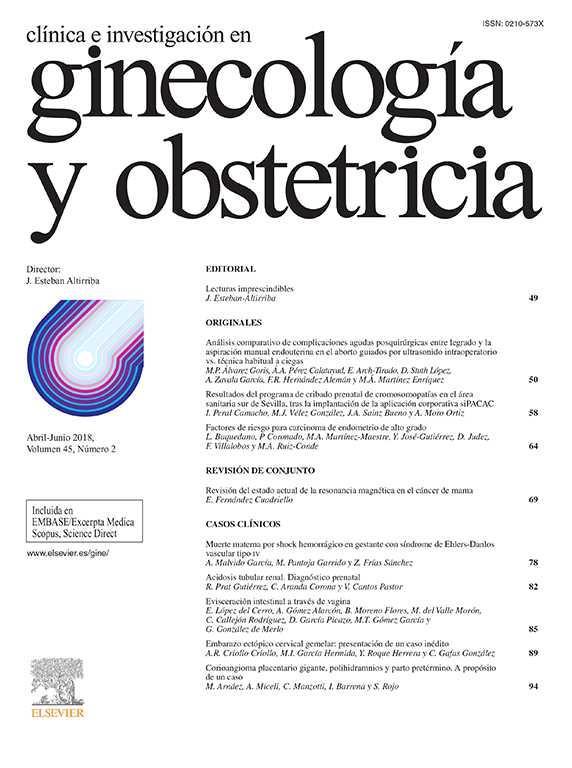To evaluate the diagnostic accuracy of the International Ovarian Tumor Analysis (IOTA) Logistic Regression Model 1, 2 (LR1, LR2) ADNEX model and IOTA Simple Rules, in the pre-surgical evaluation of ovarian tumors classified as complex adnexal masses.
MethodsThis is a cross-sectional observational study of diagnostic accuracy. We will select patients, who undergo surgical intervention due to adnexal mass with indeterminate, intermediate or high suspicion of malignancy (GI-RADS 4–5), as assessed by an expert ultrasound operator. We analyzed and compared the diagnostic performance and predictive capacity of the different models in the studied population, and also we analyzed each model by creating subgroups based on menopausal status.
ResultsOne hundred thirty five malignant masses (45%), one hundred forty benign (46.7%) and twenty five border line (8.3%) were included. LR1 and LR2 models, and ADNEX were applicable to all lesions; however, in 72 lesions (24%), the simple rules were inconclusive. We observed better performance for LR1 and simple rules, based on the following results: Sensitivity: LR1 91%. Specificity: simple rules 86%. PPV: simple rules 79%. NPV: LR1 88%.
ConclusionsOur study suggests that the subgroup of patients with complex adnexal masses, the IOTA risk stratification through LR1 shows higher sensitivity for risk stratification of malignancy, while simple rules has the highest specificity and diagnostic accuracy. However, it is inconclusive in one out of every four adnexal masses. Additionally, LR1–LR2 and ADNEX do not show significant differences in diagnostic accuracy.
Evaluar la precisión diagnóstica de los modelos de valoración ecográfica de masas anexiales del grupo de Análisis Internacional de Tumores de Ovario (IOTA), Modelo de regresión logística 1, 2 (LR1, LR2), modelo ADNEX y Reglas simples, en la evaluación prequirúrgica de tumoraciones de ovario clasificados como masas anexiales complejas.
MétodosSe trata de un estudio observacional transversal de precisión diagnóstica. Seleccionaremos a pacientes diagnosticadas de masa anexial compleja, a quienes se les realizará una evaluación ecográfica por parte de un ecografista experto, con una clasificación como GIRADS 4-5, y de las cuales tengamos un diagnóstico histológico. Analizamos y comparamos el rendimiento diagnóstico y la capacidad predictiva de los diferentes modelos en la población estudiada, y también analizamos cada modelo creando subgrupos en función del estado menopáusico.
ResultadosSe incluyeron 135 masas malignas (45%), 140 benignas (46,7%) y 25 borderline (8,3%). Los modelos LR1, LR2 y ADNEX fueron aplicables a todas las lesiones; sin embargo, en 72 lesiones (24%), las reglas simples no fueron concluyentes. Observamos un mejor rendimiento para LR1 y las reglas simples, según los siguientes resultados: sensibilidad: LR1 91%; especificidad: reglas simples 86%; PPV: reglas simples 79%, y VPN: LR1 88%.
ConclusionesNuestro estudio sugiere que, en el subgrupo de pacientes con masas anexiales complejas, la estratificación del riesgo de IOTA mediante LR1 muestra una mejor sensibilidad para el riesgo de malignidad, mientras que las reglas simples presentan la mejor especificidad y exactitud diagnóstica; sin embargo, no es concluyente en casi una de cada 4 tumoraciones. Los sistemas LR1-LR2 y ADNEX no mostraron diferencias significativas en cuanto a exactitud diagnóstica.










